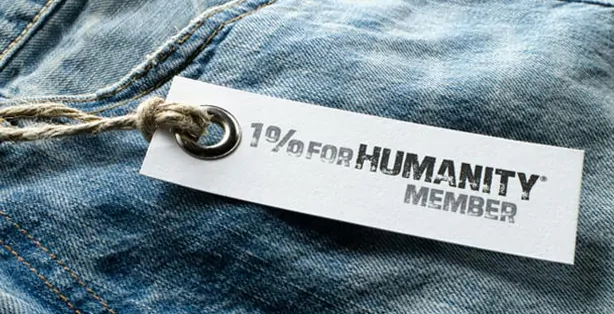
One percent doesn’t seem like a big figure. Even in terms of giving, setting aside 1 percent for a charity doesn’t seem like an intimidating order … right? And yet, average corporate donations in the U.S. come in closer to one tenth of 1 percent of sales. Which is why Nick Pearson founded 1% for Humanity, to generate an intentional revenue source to worldwide poverty and injustice issues.
The organization partners with businesses, asking them to commit at least 1 percent of their sales to an approved nonprofit. In exchange, they get to bear the 1% for Humanity mark on products and materials. This connection serves a dual purpose of supporting global causes while increasing marketing efforts with integrity.
“We’re focused on smaller businesses that may not have the capacity to create their own cause-marketing programs,” Pearson says. “Maybe they don’t have the time, maybe they don’t have the money. It’s this third-party thing they can tie into very simply if they commit to the level of giving that we’re trying to promote.”
By drawing a firm line on the minimum amount of giving, 1% for Humanity can ensure that businesses are truly dedicated to a personal cause. Furthermore, this percentage is based off of actual revenues (sales) as opposed to the operating profit (after expenses) most corporations would pull donations from.
“Calling them to that higher standard of 1 percent of sales is drastically different than what most businesses are doing,” Pearson explains.
Such a cause-marketing model may not be entirely new, but the relationship that 1% for Humanity creates between private businesses and broad causes is unique. With a $30 trillion revenue stream for private firms in the U.S., one can only imagine the impact such increased donations could make around the world.
“Global giving has been left out of the picture. … Only 3 percent of donations in the U.S. go into any sort of international aid,” Pearson says. “People expect brands to promote green concepts because they’ve seen it so much, but recently there seems to be renewed interest in humanitarian issues.”
The 1% for Humanity website launched in the spring of 2009, and continues to look for new businesses to promote new nonprofits to support. Pearson believes 1% for Humanity can do more than just provide accountability for young businesses, it can also influence the common approach to global donations—and make a big change with a small number.
“Together we can collectively drive an actual movement that changes trends in business giving.”
To learn more about 1% for Humanity, visit their website.




















